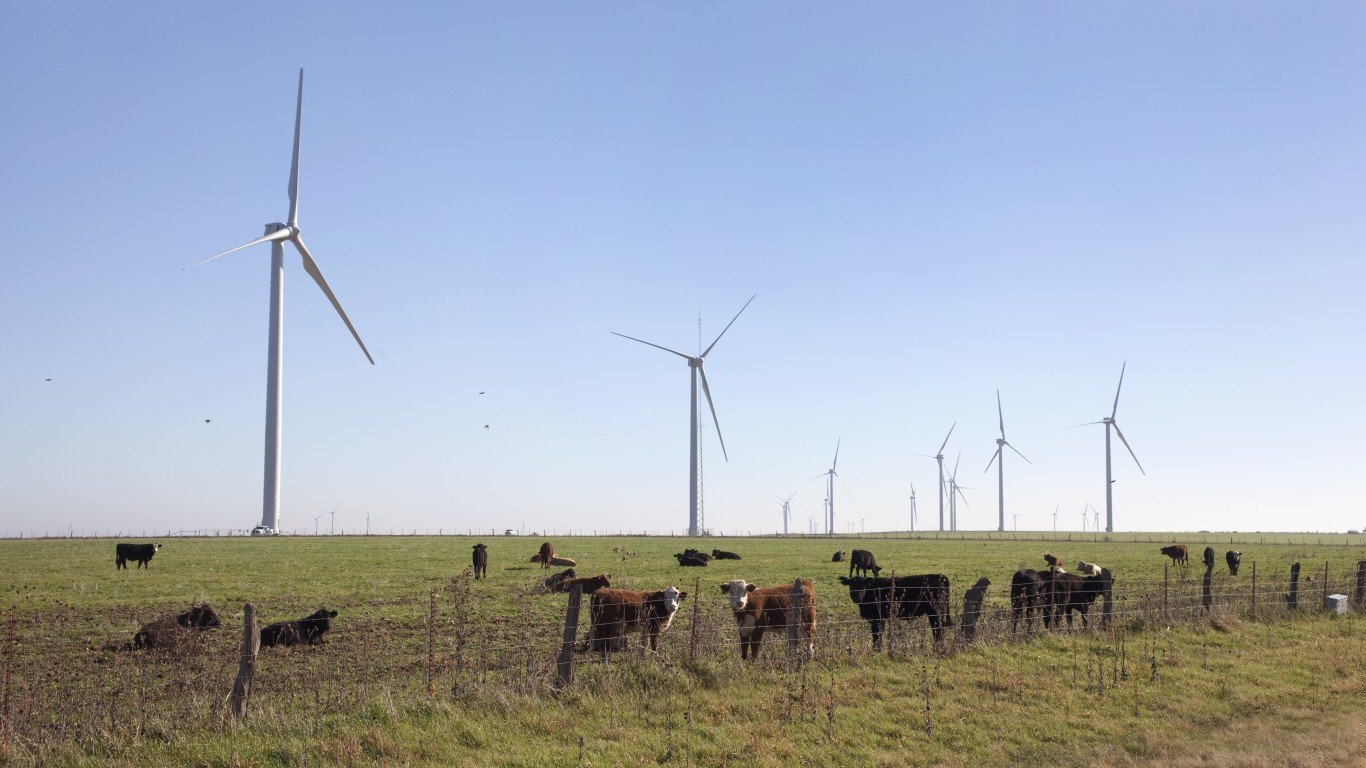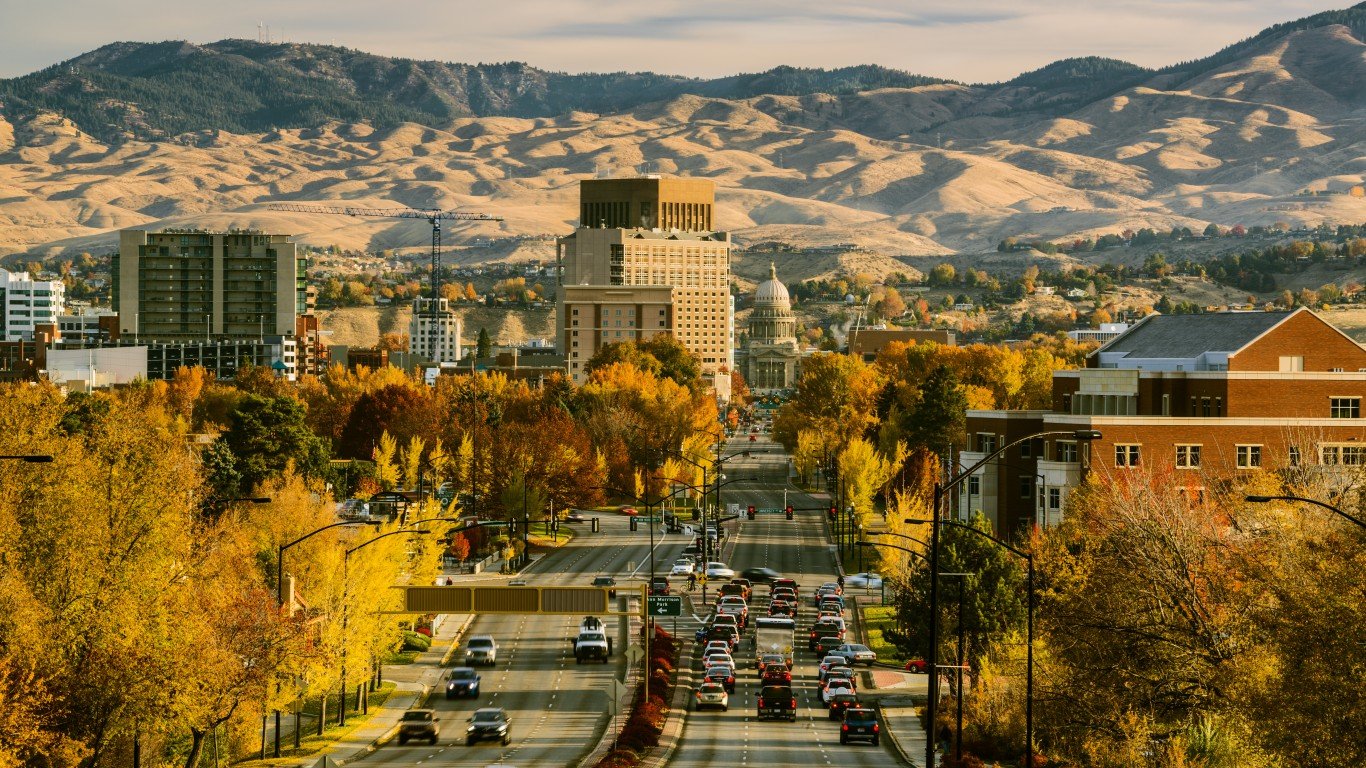
3. Texas
> Potential jobs created under Inflation Reduction Act in 2030: 1 for every 258 people (116,280 total)
> Potential new jobs as a share of current unemployed population: 20.4%
> Unemployed population in 2022: 569,725 (3.9% of labor force)
> Energy-related carbon dioxide emissions in 2021: 22.4 metric tons per person (51.7% higher than avg.)

2. Idaho
> Potential jobs created under Inflation Reduction Act in 2030: 1 for every 254 people (7,457 total)
> Potential new jobs as a share of current unemployed population: 29.5%
> Unemployed population in 2022: 25,314 (2.7% of labor force)
> Energy-related carbon dioxide emissions in 2021: 10.8 metric tons per person (27.2% lower than avg.)

1. Utah
> Potential jobs created under Inflation Reduction Act in 2030: 1 for every 251 people (13,423 total)
> Potential new jobs as a share of current unemployed population: 33.2%
> Unemployed population in 2022: 40,380 (2.3% of labor force)
> Energy-related carbon dioxide emissions in 2021: 18.6 metric tons per person (25.6% higher than avg.)





